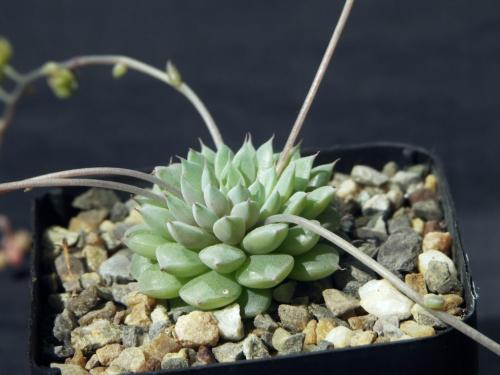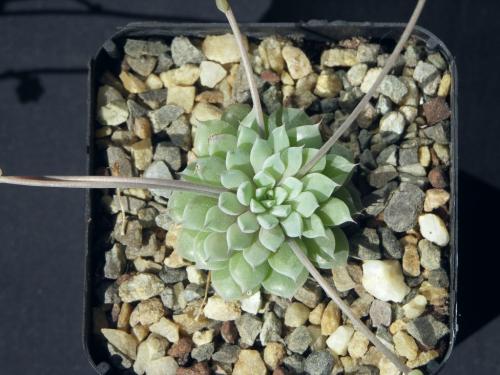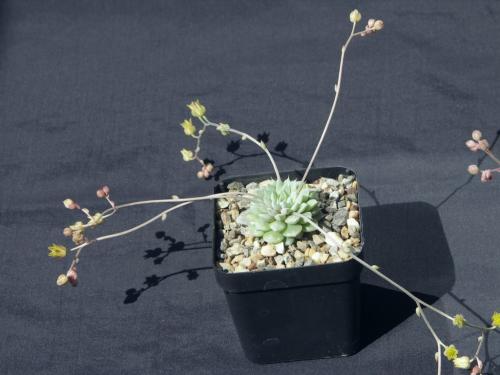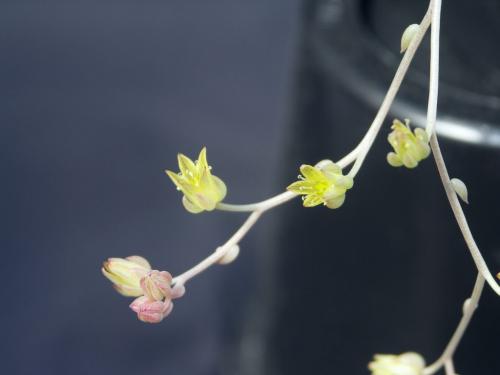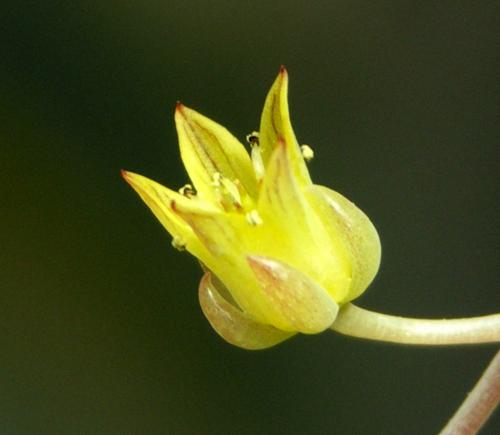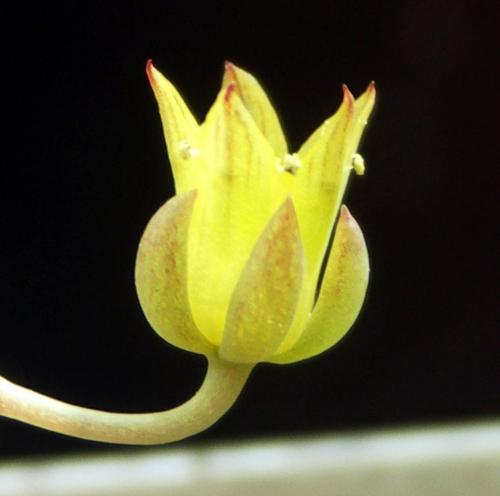KIMNACHII Meyrán & Vega, 1998
Synonym : Graptopetalum occidentale
Series Paniculatae
Distribution : Mexico (Sinaloa), growing in tropical deciduous forest at 450 m asl.
Description :
Plant glabrous, acaulescent.
Rosettes single, sometimes caespitose, compact, ca 4.5 cm in diameter, 1 - 5 cm high, with 80 - 90 leaves.
Leaves ca 20 x 8 - 10 mm, oblanceolate, obtuse and mucronate, mucro 1 - 3 mm long, margins rounded, convex on both sides, bluish green to green.
Floral stems 1 - 4, 11 - 36 cm long, with 6 - 7 ascending bracts in the upper 2/3, bracts lanceolate, acute, mucronate, flat or slightly convex above and convex on underside, 5 - 7 x 2 - 2.5 mm , green or yellowish green, mucro reddish, inflorescence paniculate with 2 - 4 cincinni each 5 - 6 cm long and with 3 - 10 flowers, pedicels 4 - 6 mm long.
Flowers : Sepals ascending and adpressed, almost equal, ovate, 3.5 - 4.5 x 1.5 - 2.5 mm, olive green, corolla tubular-campanulate, 6 - 7 mm long, 4 mm wide at base, 7 mm wide at mouth, petals imbricate, oblanceolate, united for 2 mm at the base, subacute, carinate on the external surface, greenish to yellow with longitudinal reddish stripes on the uper third, less distinct inside, anthers blackish.
Note :
1. A comparison of the description of G. occidentale with that of Echeveria kimnachii suggests that they are very probably one and the same species - inspite of the fact that they have been attributed to two different genera. Why a Graptopetalum species and an Echeveria species can be considered one and the same plant is explained by the fact that neither G. occidentale is a typical Graptopetalum nor E. kimnachii a typical Echeveria.
Whether or not they have been collected at more or less the same locality or at least the same region in Sinaloa is impossible to know because of the lack of any precise information regarding the type locality of G. occidentale.
2. In Cactus and Succulent Journal US 89 (1): 15 - 16, 2017, Myron Kimnach, for whom E. kimnachii was named, created the new genus Reidmorania for this plant. To establish a new genus solely for this somewhat deviant Echeveria seems disproportionate and is not followed here.
